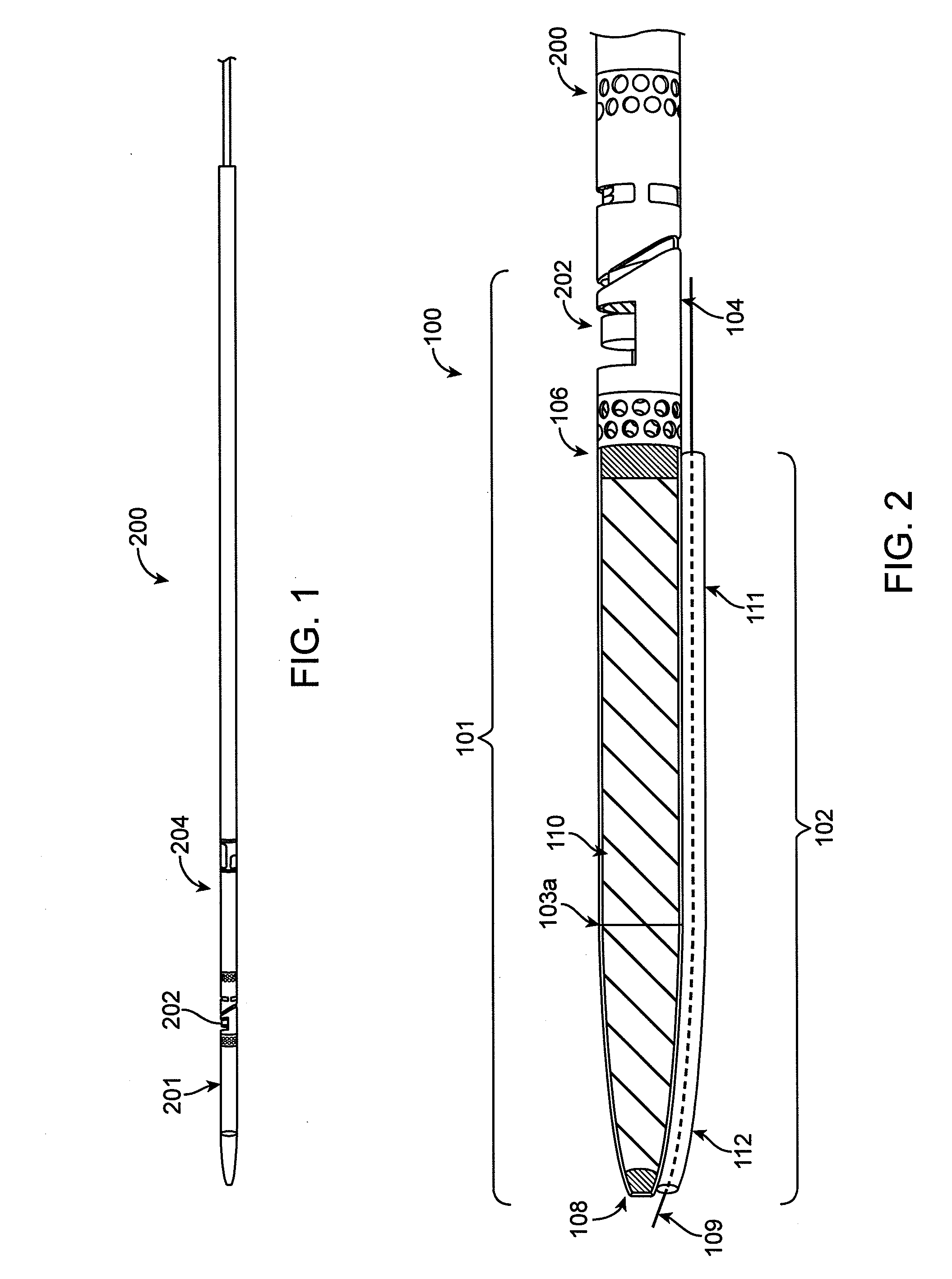Tissue collection device for catheter
- Summary
- Abstract
- Description
- Claims
- Application Information
AI Technical Summary
Benefits of technology
Problems solved by technology
Method used
Image
Examples
Embodiment Construction
[0066]The tissue collection devices described herein typically include a tissue chamber, reservoir, and / or tissue storage area adapted for receiving and retaining excised tissue or solid biological material. Advantageously, such collection devices can be used during minimally invasive procedures where tissue or other material is cut and removed from the patient's body. The tissue collection devices may be used with any suitable catheters including, at least, those described in U.S. Patent Application No. 61 / 646,843, titled “ATHERECTOMY CATHETERS ERS WITH IMAGING,” filed on May 14, 2012, U.S. patent application Ser. No. 13 / 433,049, titled “OCCLUSION-CROSSING DEVICES, IMAGING, AND ATHERECTOMY DEVICES,” filed Mar. 28, 2012, U.S. patent application Ser. No. 13 / 175,232, titled “ATHERECTOMY CATHETERS WITH LONGITUDINALLY DISPLACEABLE DRIVE SHAFTS,” filed on Jul. 1, 2011, U.S. patent application Ser. No. 12 / 829,277, titled “ATHERECTOMY CATHETER WITH LATERALLY-DISPLACEABLE TIP,” filed on Jul...
PUM
 Login to View More
Login to View More Abstract
Description
Claims
Application Information
 Login to View More
Login to View More - R&D
- Intellectual Property
- Life Sciences
- Materials
- Tech Scout
- Unparalleled Data Quality
- Higher Quality Content
- 60% Fewer Hallucinations
Browse by: Latest US Patents, China's latest patents, Technical Efficacy Thesaurus, Application Domain, Technology Topic, Popular Technical Reports.
© 2025 PatSnap. All rights reserved.Legal|Privacy policy|Modern Slavery Act Transparency Statement|Sitemap|About US| Contact US: help@patsnap.com



